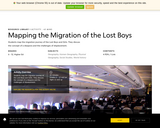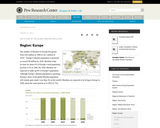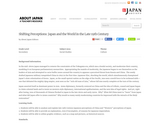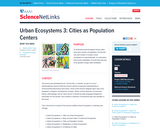
This parent guide supports parents in helping their child at home with the 7th grade Social Studies content.
- Subject:
- Social Studies
- Material Type:
- Reference Material
- Vocabulary
- Author:
- Kelly Rawlston
- Letoria Lewis
- Date Added:
- 10/12/2022

This parent guide supports parents in helping their child at home with the 7th grade Social Studies content.

This resource accompanies our Rethink 7th Grade Social Studies course. It includes ideas for use, ways to support exceptional children, ways to extend learning, digital resources and tools, tips for supporting English Language Learners and students with visual and hearing impairments. There are also ideas for offline learning.

Containing more than 50 articles from the award-winning Tar Heel Junior Historian magazine and over 40 lesson plans, this multidisciplinary Educator Notebook will enrich your exploration of North Carolina and American history with diverse perspectives. This resource's link takes you to a very short form that gives you free downloadable access to the complete PDF book.

If students take away anything from Remarkable Journey, it is hopefully the incredible ways the Indian community has contributed to the progress, growth, diversity and richness of the state of North Carolina. In this activity (best conducted after students have been exposed to multiple clips or the entire film,) students will consider all that they have learned about India and its people then create movie poster for Remarkable Journey that they think best highlights these themes.

In this lesson, students will familiarize themselves with some basic facts about India that highlight its diversity. Students will then view excerpts from (or the entirety of) Remarkable Journey and utilize the film’s information as a jumping off point to learn about various aspects of Indian culture (food, music, film, clothing, dance, and religion.) Yet, despite such diversity, Asian Indian immigrants to North Carolina, fellow strangers in a strange land, often rely on their shared roots to build new and unified communities. Students will discuss this concept then use their discoveries to create a mural that exemplifies the theme: "India: Unity in Diversity."

India is a diverse land of religions and spirituality. It is not only the birthplace of Hinduism, Buddhism, Jainism, and Sikhism, but numerous other faiths are practiced there, including Islam, Christianity, Judaism, Zoroastrianism, and others. Through viewing clips from Remarkable Journey and completing the following activities, students will explore the various religions with connections to India, as well as the way Asian Indians have integrated their diverse religions into communities across North Carolina. As a culminating activity, students will delve further into one particular religion mentioned during class by creating a scrapbook of that religion.

In this lesson, students will consider immigration in general as well as through the specific lens of the Asian Indian immigrant experience by viewing clips from Remarkable Journey. Students will explore their own immigrant ancestry as they consider the concept of America as a "Nation of Immigrants," as well as the varying reasons for immigration throughout history, the varied experiences of immigrants, their relationship to the American Dream, and the misconceptions that often frame immigration in our society. As a culminating artistic activity, students will create an updated Statue of Liberty - a new design that addresses immigration, America as a "Nation of Immigrants," the concept of the "American Dream," and the related concepts addressed throughout the lesson.

Students will explain factors that influenced the movement of people over time by examining the correlation between indentured servitude in the early American colonies and undocumented immigration today. They will understand how demographic trends, such as push and pull factors, lead to conflict, negotiations, and compromise in modern societies.

Students will be introduced to the Industrial Revolution's problem of child labor. Students will be able to describe advances in machinery during the Industrial Revolution. Students will identify reasons for the use of child laborers during the Industrial Revolution and describe how child laborers lived during the Industrial Revolution. Some of the YouTube links are dead, but the images are included in the pdf.

Students map the migration journey of the Lost Boys and Girls. They discuss the concept of a diaspora and the challenges of displacement.

This file is the PPT accompaniment for "Teaching Activities for Remarkable Journey." "Remarkable Journey: Founding the Asian Indian Community in North Carolina" is a documentary that illustrates the history, culture, lives, and contributions of Indian-Americans in North Carolina.

This resource provides informatin and data on the increase of the Muslim population in various European countries.

This course was created by the Rethink Education Content Development Team. This course is aligned to the NC Standards for 7th Grade Social Studies.

This course was created by the Rethink Education Content Development Team. This course is aligned to the NC Standards for 7th Grade Social Studies.

In this lesson, students analyze and explain late 19th Century Japanese perceptions of China and "Western" perceptions of Japan. They provide an explanation, if necessary, of reasons for Japanese imperialism and utilize graphic evidence, such as a map and pictures, as historical sources.

This simulation focuses on a U.S-led effort to bring together many elements of both Israeli and Palestinian society to hold discussions about the needs and interests of both sides before entering into formal negotiations. The simulation provides an opportunity to view this longstanding conflict from the perspectives of those immediately impacted by it: in particular, the communities of ordinary Israelis and Palestinians who have yet to see much benefit in their own lives from the peace process.

Study guide for the "Remarkable Journey: Founding the Asian Indian Community in North Carolina," a documentary that illustrates the history, culture, lives, and contributions of Indian-Americans in North Carolina.

In this lesson, students examine the increase in size and number of cities in the very recent past and the influence of fossil fuel use in particular on urbanization. Students will visit a variety of websites that deal with urban population, fossil fuel consumption, and the signals (i.e. carbon dioxide emissions) that can be used to track population changes.

In this lesson, students explore the First Industrial Revolution in early nineteenth-century America. Through simulation activities and the examination of primary historical materials, students learn how changes in the workplace and less expensive goods led to the transformation of American life.

This inquiry leads students through an investigation of water access in the Middle East using various sources that consider geographical, political and economic issues. By investigating the compelling question, students examine the geography of the region, including environmental and demographic relationships, the ecological impact of accessing water, and the subsequent political conflicts over control of natural resources.